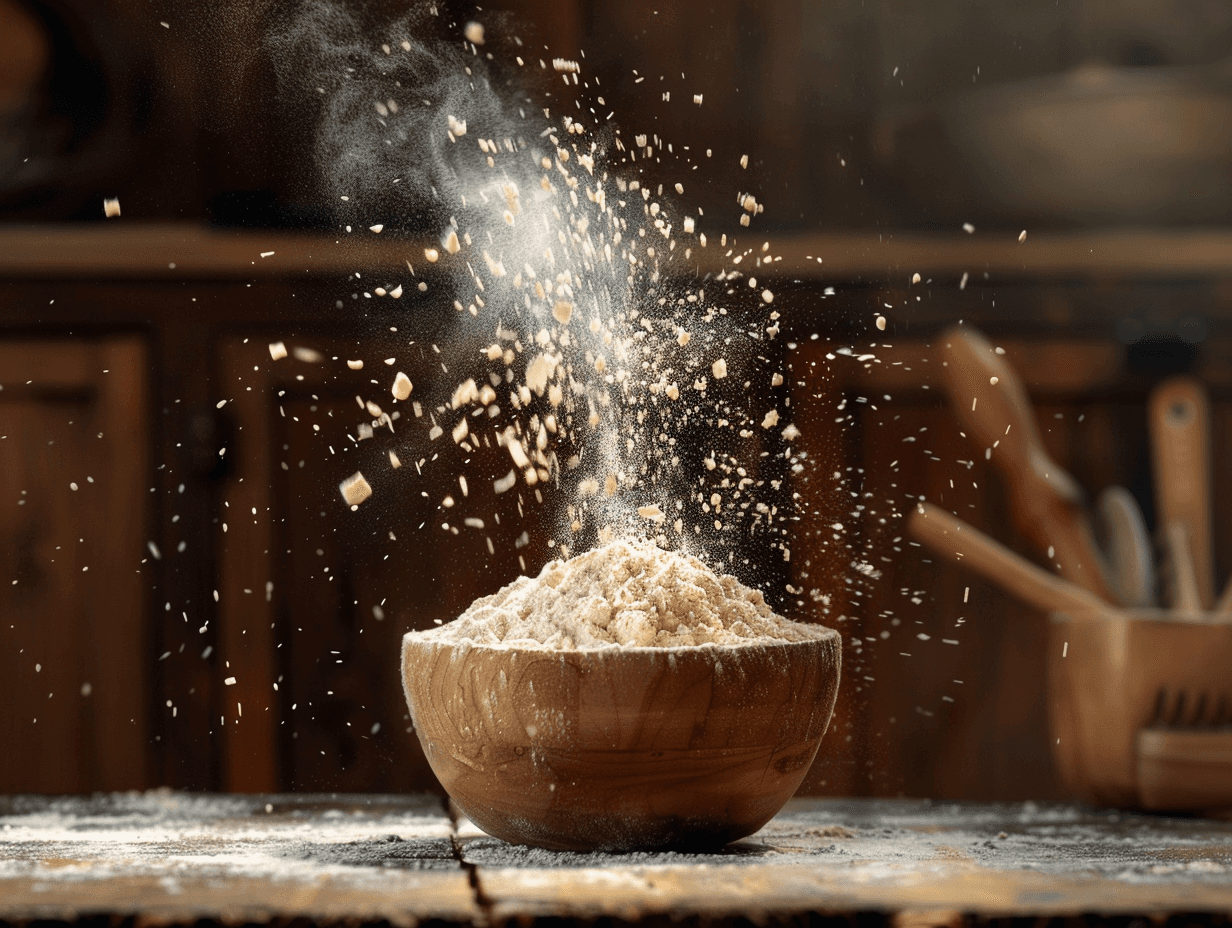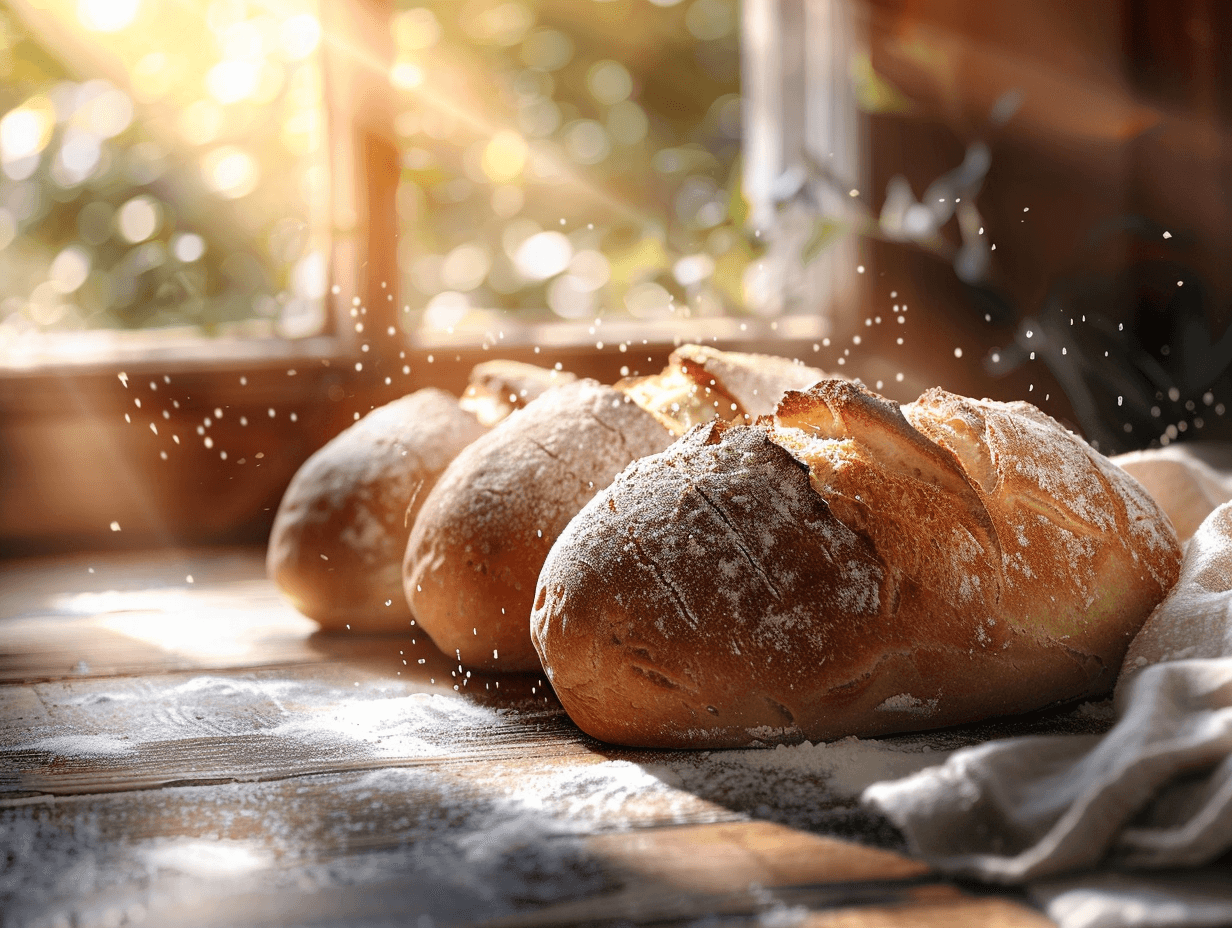Flour Quality Insights: Important Traits and Testing Methods
Flour quality is a critical factor that significantly influences the performance of various industries, especially those involved in baking, pastry production, and large-scale food manufacturing. The quality of the flour you use directly impacts the end product, whether it’s bread, cakes, or other baked goods. High-quality flour ensures better texture, taste, and appearance, making it an essential ingredient in producing superior food products. For manufacturers, understanding flour quality and optimizing it based on different applications is key to ensuring consistent results, reducing waste, and maximizing production efficiency. This guide will explore the essential characteristics that define flour quality, the main tests used to evaluate it, and the importance of accurate testing in achieving industrial success.
Why Flour Quality Matters?
Flour quality matters because it affects the performance of every product that relies on it. Whether you are producing bread, cakes, pastries, or other baked goods, the quality of flour influences the texture, structure, and overall taste of the final product. Inconsistencies in flour quality can lead to issues like under-risen bread, tough textures, or poor flavor development, all of which can diminish product quality and customer satisfaction.
For producers in the food industry, ensuring consistent flour quality is key to maintaining a strong brand reputation. The quality of flour is determined by multiple factors, including the selection of raw materials, processing methods, and thorough quality control measures. Without regular testing and assessments, it can be difficult to meet the high-quality standards expected by customers and regulatory bodies.
Key Characteristics of Flour Quality
When evaluating flour quality, experts look at a combination of physical, chemical, and rheological properties. Each of these characteristics plays a crucial role in how the flour performs during processing and baking. By understanding these traits, producers can optimize their processes to produce consistent, high-quality flour.
1. Physical Quality Characteristics
Physical characteristics of flour are the first indicators of its quality. These traits directly affect how the flour behaves during mixing, fermentation, and baking, making them essential in predicting the final product’s success.
• Flour Yield: Yield is one of the most important indicators of flour quality. The higher the yield, the more minerals (ash) and protein the flour contains. However, as yield increases, the gluten content may decrease, affecting how the dough will rise and bake. Managing flour yield is critical, particularly for bread-making, where the right balance of protein and gluten is needed to achieve a good loaf.
• Particle Size: Particle size plays a significant role in how well the flour absorbs water and how quickly it develops into dough. Smaller particles absorb more water, which can shorten the dough development time. This is particularly important in fast-paced industrial baking environments. However, not all flour needs small particle sizes; for example, bread flour benefits from larger particles that contribute to a more robust structure, while finer particles are better suited for pastries where a delicate crumb is required.
• Flour Color: The color of flour is another important physical attribute. It is influenced by various pigments present in the wheat, such as carotenoids and xanthophylls, which affect the visual appeal of the flour and the final product. For example, the yellowish hue from carotenoids is desirable in durum wheat for pasta, while white flour, with less pigment, is preferred for certain baked goods like cakes and pastries. Additionally, environmental factors like light exposure during storage can affect flour color, making it essential to store flour in controlled conditions.
2. Chemical Quality Characteristics
Chemical properties of flour directly influence how the dough behaves during the baking process and how the final product tastes and feels.
• Moisture Content: The moisture content of flour is a critical factor in its quality and longevity. Flour with high moisture levels (above 14.5%) is prone to spoilage, as excess moisture encourages mold growth and bacterial activity. To ensure long shelf life and safe storage, the moisture content must be carefully controlled during production and storage. Flour that is too dry, on the other hand, can result in a shorter dough development time, impacting its elasticity and workability.
• Protein Content: Protein content is one of the most important chemical traits in flour, particularly for baking. High-protein flour (with more than 10.5% protein) is essential for bread production, as it provides the gluten necessary for the dough to rise and retain its shape. Protein content varies depending on the type of flour, with bread flour having higher protein content compared to pastry flour. For cakes and pastries, lower protein levels are preferred to create a softer, more tender texture.
• Ash Content: Ash content reflects the mineral composition of the flour. Lower ash content is indicative of a purer, more refined flour, which is desirable for products requiring high-quality white flour. High ash content may lead to a denser end product and is often associated with whole wheat or darker flours.
• Damaged Starch: Damaged starch forms during the milling process when the wheat is ground into flour. While some starch damage is expected, excessive damaged starch can absorb too much water, resulting in a sticky dough that affects fermentation and gas retention. Managing starch damage is essential for achieving consistent product quality.

3. Rheological Quality Characteristics
Rheological properties are critical for understanding how flour will behave during mixing, fermentation, and baking. These characteristics determine the dough’s elasticity, strength, and ability to hold gas, all of which are essential for producing well-risen bread and other baked goods.
• Farinograph: The farinograph test measures the water absorption of the flour, the development time, dough stability, and the weakening of the dough over time. It provides valuable insights into how the flour will perform in an industrial mixing environment, helping manufacturers predict how the dough will behave during large-scale production.
• Extensograph: The extensograph evaluates the dough’s elasticity and extensibility, both of which are essential for determining the strength of gluten. The test measures how well the dough can stretch and hold its shape, which is particularly important for bread-making where dough needs to trap gas to rise properly.
• Alveograph: The alveograph test measures the dough’s ability to stretch and inflate, mimicking the way dough behaves during fermentation. This test helps predict the volume and texture of the final product, making it an essential tool for ensuring consistency in bread production.
Flour Testing Methods
To ensure that flour meets the required industry standards, it undergoes rigorous testing. These tests evaluate the physical, chemical, and rheological properties of the flour, helping producers identify the best applications for each batch.
1. Gluten Content and Quality
• Wet Gluten Percentage: The amount of gluten in the flour significantly impacts its baking qualities. Flour with more than 35% wet gluten is considered high-quality for bread production, while lower values (below 15%) indicate flour unsuitable for bread-making.
• Gluten Index (GI): The gluten index measures the strength of the gluten. For bread production, a gluten index between 60 and 90 is ideal, as it indicates strong gluten formation. Flour with a GI below 40 is generally unsuitable for making bread, as it lacks the strength to support proper dough rise and structure.
2. Sedimentation Value
The sedimentation test measures the quality of gluten in the flour. It is critical for determining the bread-making potential of flour. Values above 30 mL are considered excellent, while values between 20-25 mL indicate average quality. This test is widely used in the baking industry to ensure consistent flour quality.
3. Falling Number
The falling number test measures the level of alpha-amylase activity in the flour. This enzyme can break down starch in the flour, impacting its ability to rise properly during baking. A falling number between 200-250 seconds is considered optimal for bread flour. Lower values indicate that the flour may come from sprouted wheat, which can negatively affect its performance in the baking process.

Modern Technologies and Applications
With advancements in technology, new testing tools like the Mixolab and GlutoPeak are being used to provide more comprehensive insights into flour quality. These tools help producers better understand how flour will behave in different applications, allowing for more accurate predictions and consistency in product performance.
1. Mixolab
The Mixolab is an advanced tool that evaluates the dough’s behavior during mixing and heating. Unlike traditional tests that only assess specific parameters, Mixolab measures multiple aspects simultaneously, including:
• Protein Quality: Mixolab provides insights into how the flour’s proteins develop during mixing, offering a detailed understanding of gluten strength and elasticity.
• Dough Stability: It assesses the dough’s stability over time, which is critical for industrial producers who need to know how the dough will behave during long production processes.
• Starch Gelatinization: Mixolab also measures the starch gelatinization process during heating. This is essential for products that undergo high temperatures during baking, such as bread and cakes. It helps predict how the starches in the flour will break down and interact with other ingredients.
This comprehensive analysis makes Mixolab an invaluable tool for flour producers who need to ensure consistent product performance across a wide range of applications.
2. GlutoPeak
The GlutoPeak is another modern instrument designed to assess gluten strength and the speed of gluten formation quickly. This test is crucial for products like bread that require strong gluten networks to rise and maintain their structure. GlutoPeak provides rapid results, helping manufacturers determine whether a particular batch of flour is suitable for producing high-quality, gluten-rich products.
Both Mixolab and GlutoPeak offer real-time data that can be used to adjust formulations, optimize production processes, and ensure the best possible results in every batch of flour.
Final Considerations for Achieving High-Quality Flour
Flour quality is a multifaceted concept that encompasses physical, chemical, and rheological characteristics. For industrial producers, understanding and controlling these factors is essential for delivering consistent, high-quality products. By regularly testing flour for moisture content, protein levels, gluten strength, and other key traits, manufacturers can optimize their production processes and ensure their flour meets the high standards expected by the market.
With the continued demand for high-quality flour, producers need to stay ahead by investing in modern testing methods like the Mixolab and GlutoPeak, which offer accurate, real-time insights into flour performance. This proactive approach helps reduce waste, increase efficiency, and ensure the best possible results in every batch.


